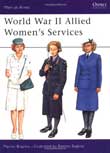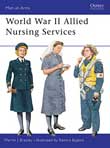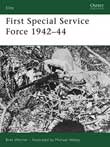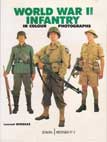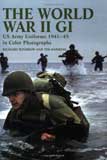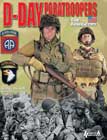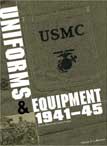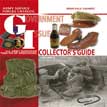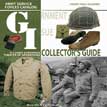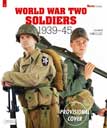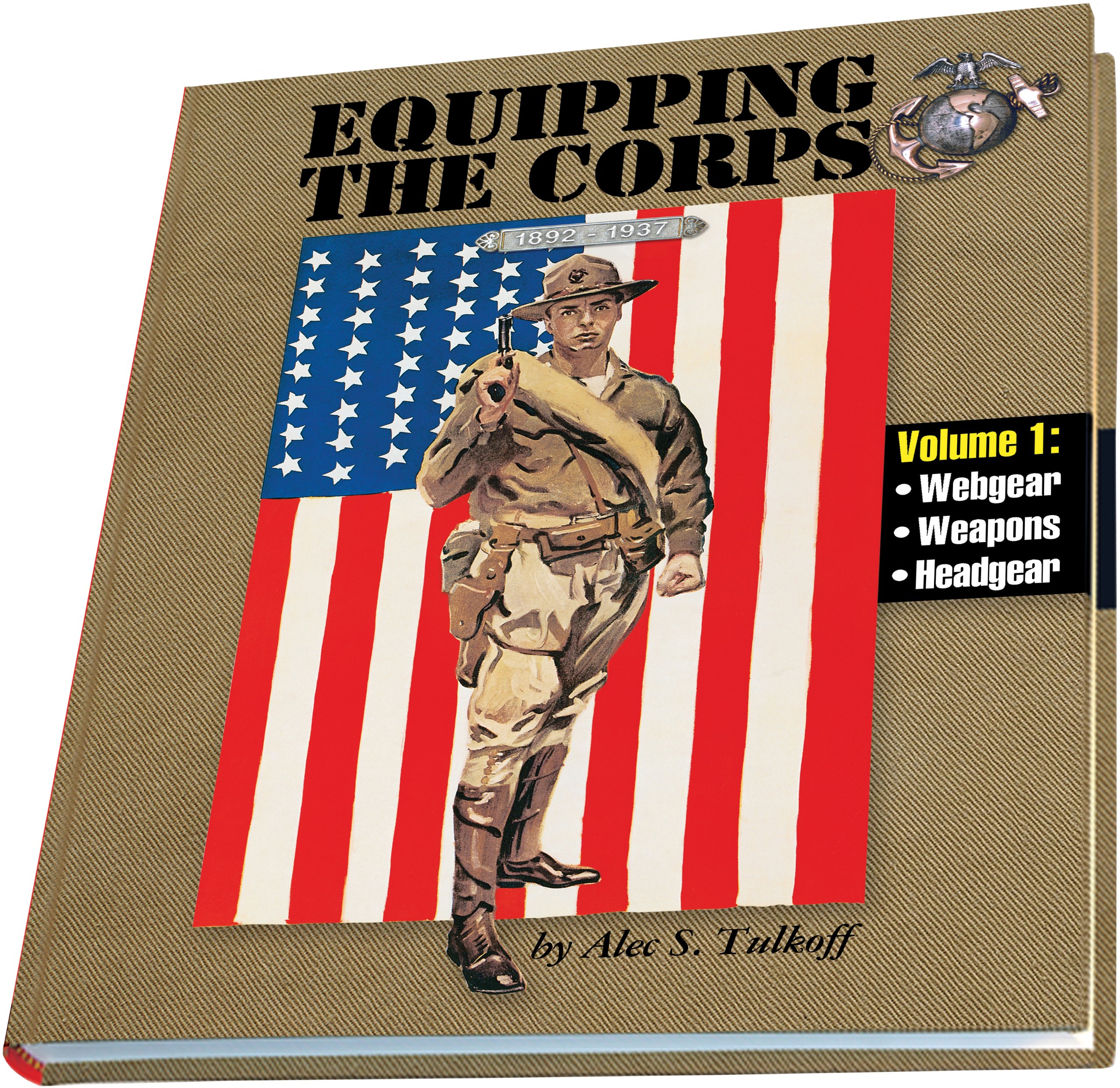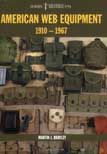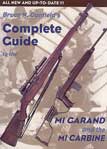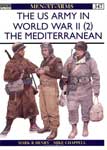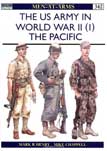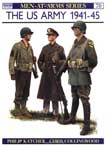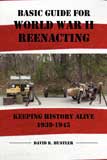

The contribution of women to the Allied war effort during World War II (1939-45) was massive. Apart from their many vital roles 'on the home front', about a million Soviet, 500,000 British and 200,000 American women, and tens of thousands from other Allied nations, served in uniform with the armed forces. To put these figures in perspective: enough American women served to free sufficient able-bodied men to form 15 infantry divisions. It was not only in the USSR that their duties took them into harm's way; hundreds of British Commonwealth and US servicewomen died, and many were decorated. This book gives a concise introduction to the organisation and uniforms of these services, with an emphasis on the British and US forces.
The skill and care of the women of the Allied military nursing services was remembered gratefully by hundreds of thousands of wounded servicemen of World War II (1939-1945). The small peacetime services increased rapidly by enrolling reservists and volunteers; the great majority of the nurses who cared for Allied casualties were 'civilians in uniform', who worked tirelessly under difficult conditions and - in tented hospitals close to the front lines - in real danger; many nurses paid for their devotion with their lives. This first-ever fully illustrated study of the US, British, Commonwealth, and other nursing organisations includes many unpublished photographs and 24 meticulously illustrated colour figures.
Osprey's examination of the First Special Service Force of the second half of World War II (1939-1945). This famous unit was formed with three battalions in July 1942, for special operations in occupied Norway, from handpicked US and Canadian volunteers who were trained in parachute, amphibious, ski, mountain and demolition operations and other 'Special Forces' skills. Their training base was Fort Harrison, Montana. In the event the Force first saw combat in Italy. There they distinguished themselves, at heavy cost, in the battles of La Difensa (Dec 1943), Mte Majo (Jan 1944), on the Anzio beachhead (Feb - May 1944) and in the race to Rome, which they actually liberated. Their uniforms, clothing and weaponry had many unique features reflecting their bi-national composition and specialist skills.
The FSSF fought with a ferocious skill which earned them a fearsome reputation. At Anzio, although at only half strength, they successfully held at least a quarter of the entire beachhead and were the spearhead of the final breakout towards Rome. Famed for their night-time fighting ability, the Germans named them "Die Schwartze Teuflen" the Black Devils (they blacked their faces with boot polish). However, after taking part in the South of France campaign in Aug - Nov 1944 the Force was disbanded, survivors passing to other units. 1,800 men at full strength, they had accounted for 12,000 enemy casualties, taken 7,000 prisoners and experienced a 600% attrition rate.
Examines the uniforms, insignia, personal equipment and weapons of the fighting men of all major armies of World War II. Rare, original uniforms and equipment are modelled and photographed from a variety of angles. Each example is accompanied by text identifying the items illustrated.
Cutting edge when it was new--still worth having!
The widespread interest in the American soldier's dress and equipment in World War II has never before been served by a major book recreating the GI's appearance by color photography. A striking study that takes techniques to a new level; live models, wearing an enormous range of authentic surviving uniforms. This book will be hailed as a "bible" by militaria collectors, modelers, illustrators, film wardrobe departments and anyone with an interest in World War II soldiers. Superbly illustrated with 280 color photographs. Richard Windrow is a life-long military modeling hobbyist and Tim Hawkins is an experienced military photographer. New in paperback for 2008.
On the night of 5- 6 June 1944, US paratroopers of the 82nd and 101st Airborne Divisions were dropped over the Cotentin peninsula, on the western part of the Normandy beachhead.
The uniforms, equipment and small arms of these men immortalized by ‘Band of Brothers’ are presented here in the sharpest detail, as well as their orders of battle and insignia.
Illustrated throughout in full color.
Reviews
"Another treasure from ... Histoire & Collections ... a superb color photographic collection" Military Trader, May 2005
Bruno Alberti and Laurent Pradier have been collecting and writing about U S Marine Corps gear for more than a decade and, in that time, have contributed complete series of articles on the topic in the French Militaria Magazine. That sequence of articles is complete and the time has now come for a revised and expanded version of the results of their work as a single bound volume.
The US Marine Corps has always enjoyed a special status among the American Armed Forces, as well as boasting distinctive uniforms and emblems.
Hundreds of items of clothing, equipment and insignia are illustrated by reenactment photos of the famous 'leathernecks' in the form of large format color plates. Many period photos found in official American archives are also reproduced and help place the reenactment shots in the correct historical context.
This new volume maintains the usual exceptional quality standards of Histoire & Collections: carefully-researched historical background, hundreds of concisely captioned color photographs of authentic artifacts and reenactment photographs taken in studio conditions to allow the reader to see the uniforms and equipment in the greatest clarity.
All chapters from volume 1 have been revised and updated (among others: uniforms, signal and medical equipment) and new sections have been added, including personal equipment, Stateside training, and the life of POWs in German camps. More than 1,000 new artifacts with detailed captions are featured in this completely revised new work. Volume 2 of the G.I. Collector’s Guide provides a complete and unequaled source of American ground force documentation for collectors and enthusiasts alike.
This is spectacular new book from Europe’s leading uniform and equipment publisher will follow in the footsteps as such classics from the past as From Doughboy to GI.
Histoire and Collections has earned a reputation for producing the finest, incredibly detailed and sumptuously illustrated books. Their technique reaches a new level with this latest book.
All the uniforms, insignia, badges, weapons and equipment of the ETO are described in detail and depicted in both photographs and full color graphics.
This book is a must for any collector in the field.
REVIEWS
“This book must rate a perfect “10” for your reference library…the heavyweight champion of reference books for anyone interested in modeling the World War II G.I.’s and their equipment… one resource book that can just about do it all...This treasure book even concludes with a selection of some trophies “liberated” from the other side. If you can only buy one book for your WWII G.I. references, buy Government Issue and see where the term “G.I.” came from. Thank you, Mr. Enjames.” Historica Formus 3/05
Presented here in this eighth Militaria guide are detailed color illustrations of the uniforms and equipment of combat infantrymen of WWII, displayed on live models.
Only authentic pieces from several private and public collections have been chosen for this work, and are presented on the man as they were carried on the battlefield.
Each of these 31 soldiers, Polish, Belgian, French, German, British, Italian, Russian and North American, is photographed from the front and back to reveal every detail and accompanied by detailed captions.
The long awaited follow-up to the award winning Grunt Gear has taken seven years to research and it does not disappoint. Tulkoff has once again combed through countless archives and private collections to bring never before seen USMC pieces of equipment and photographs together in this first of a two volume set. Volume I covers, field gear, small arms (pistols, rifles and machineguns) and head- gear. The evolution of the Marine Corps bell crown cap is meticulously documented with both photographs and archival documentation. Arsenal and Quartermaster records thought to have been destroyed were located and new serial numbers attributed to the Marine Corps have been identified for Krag rifles (1,000) as well as M1903 rifles, M1912 Colt Automatics, BAR s and even a handful of shotguns. Detailed information about quantities contracted are supplied in the field gear chapter in regards to cartridge belts and suspenders. The USMC Quartermaster Depot is examined and details about its manufacturing and capabilities are described. The research and writing of this book was originally done in order to compliment the Book of the Year award winning - Grunt Gear: USMC Combat Infantry Equipment of World War II. Due to the manner in which the Marine Corps developed and manufactured uniforms and equipment, and the massive number of changes made to Uniform and Equipment Regulations it became evident that this book had to start with the 1892 Uniform Regulations. This brought up the issue of incorporating Dress Blues into this research as the first Marine Corps Combat Uniforms were actually blues. However, these blues eventually were phased out of combat and became the ever present Dress Blues as known today. Due to the large number of changes and massive amount of research covering the 1892, 1896, 1897, 1900, 1904, 1908, 1912, 1917, 1922, 1929 and 1937 Uniform Regulations, the book grew exponentially. In order to provide a reasonably concise book at an affordable price it was deemed necessary to break the book into two volumes. This volume covers Weapons, Webgear and Headgear. The information in this book was compiled from many resources including archival documents and photographs as well as many museums and countless private collections. While researching this book, Marine Corps Depot Records not previously found or forgotten about long ago were located as well as Annual Reports of the Commandant. Although the Eagle, Globe and Anchor (EGA) is the most identifiable insignia around the world for the U.S. Marine Corps, it is not being addressed in this volume or the next. Due to the massive amount of information (an entire other book) it was decided not to cover the EGA. From a collector s standpoint EGAs should not be used as the only method of dating or evaluating a uniform or piece of headgear. Since many collectors only specialize in EGAs they will purchase a piece of headgear for the EGA only, and then add a lesser or misdated EGA and resell the cap. This creates issues for headgear and other EGA collectors
In this book, a follow-up to the same author's well-received study of British web equipment, Martin Brayley gives a detailed illustrated overview of the webbing straps, holsters, carriers and haversacks used by American combat troops from before World War One to the Vietnam War. Hundreds of different items are photographed, and the often small differences between suppliers and periods are pointed in the learned and informative text. This book will be required reading for all students of American uniform and equipment, modelers, re-enactors and collectors.
The world's most popular and respected author on World War II firearms presents his most complete examination of the M1 Garand and the M1 Carbine ever. It's absolutely huge - nearly 300 pages packed solid with the kind of useful, hands-on knowledge that readers have been demanding. Detailed, close-up photographs show the specific features that separate valuable rarities from fakes and rebuilds. Covers all the manufacturers, with easy-to-understand explanations of all the components, parts, variations and markings. Learn which parts are proper for which guns and avoid being fooled. Over 300 clear, large photos show you features, markings, overall views and actions shots of the guns being used in battle. 33 tables give you instant reference to the facts you need the most. This is simply the most complete and useful guide to these very important military firearms.
To honor the 70th anniversary of D-Day, this superlatively photographed book tells the story of the landings through more than 200 key objects carried by the men who launched the campaign. Selected for their importance to the outcome, and often arranged exactly as the participants' kits were, the artifacts include uniforms and personal mementos of such Generals as Eisenhower and Patton; blueprints of the Mulberry harbors; personal mementos of the US Rangers on Omaha Beach and British Airborne troops at Pegasus Bridge; K-rations and cigarettes, and even rare German Army and Waffen SS material collected from the Normandy battlefields. International in scope, the book covers the US, UK, Canadian, Polish, Free French, and French Resistance, along with Axis soldiers.
The GIs who struggled ashore through the surf of Omaha and Utah Beaches on 6 June 1944 were members of the best-equipped army ever assembled up to that date. It was in the NW Europe campaign of June 1944-May 1945 that the US Army was finally able to show its full potential for fluent mechanised warfare - though at a high cost in lives. This Men-At-Arms title describes and illustrates both combat and service uniforms worn in the ETO, from the assault troops on the D-Day beaches to bemedalled veterans celebrating VE-Day; other subjects covered include artillery, tanks, anti-tank weapons, the engineers, the replacement system; and the insignia of the divisions committed to this front.
It was the Mediterranean theatre which saw the blooding of the US Army - and Generals Eisenhower and Patton - against the German Wehrmacht, in North Africa in winter 1943/44. After this rough education the US forces pressed on with increasing skill and determination to Sicily, the South of France and the Italian mainland. Here, faced by difficult terrain brilliantly exploited by General Kesselring, they and their British Commonwealth allies fought a long and punishing campaign until VE-Day. This second of a series of three MAA titles covers the uniforms worn on these fronts, including US Army cold weather, airborne and tankers' gear; some particularly interesting and important units, including mountain, Japanese-American and African-American troops; and a variety of crew-served weapons.
When World War II broke out in September 1939 the US Army--starved of resources since 1919--numbered just 174,000 men. By VJ-Day, 2 September 1945, a total of 8.3 million had served in an army which had risen to a stable strength of 91 divisions, and which had fought in Europe, Africa and Asia. The Army's contribution to the ground war against Japan--20 divisions and numerous smaller units--has tended to be overshadowed by the dramatic exploits of the much smaller Marine Corps. This first of three titles describes and illustrates the organisation, uniforms and equipment of the US Army in the CBI and the Central and South-West Pacific from 1941 to 1945.
At the time of the Second World War, the United States Army took an unusual approach, for the period, towards the design of its uniforms. Rather than attempt to find an all-purpose outfit, such as the British battledress, it attempted to design special-purpose dress for every possible duty, from combat in cold climates to dress parades in hot ones. Here Philip Katcher provides an extensive examination of the many different types of uniform and equipment which saw service during the conflict.
Have you ever been obsessed in war history, particularly about World War II? You have seen reenactments of that significant moment in our time that you are thinking of participating in such an endeavor. However, you don't know how to start.
Fret no more. David Hustler, a veteran of many reenactments of historical battle events, is giving you the head start by imparting tips of the ins and outs of perfecting your own impression of a soldier of the Second World War. He will guide you from buying the proper uniforms and equipments to joining your own group or units, and from the right way of caring for your costume and implements to maintaining a good attitude in the field. Avoid being called a farb on your first day as a reenactor. Follow the expert.
Etienne Aubert elected as Pope Innocentius VI
Admiral Steven van der Haghens fleet departs to East-Indies
English parliament accept unanimously, Protestation
Empress Maria Theresa expels Jews from Prague, Bohemia and Moravia
English King George III fires government of Portland
New Jersey becomes 3rd state to ratify constitution
1st US newspaper to appear on Sunday (Baltimore Monitor)
British take Ft Niagara in War of 1812
Charles Darwins visits Vurland
1st celestial photograph (of Moon) made in US, John Draper, New York City
William Bond obtains 1st photograph of Moon through a telescope
Passy, at Paris: 1st "Samedi soir" i / d villa of lovers Rossini
South Carolina declared an "independent commonwealth"
13th Amendment ratified, slavery abolished
1st US cattle importation law passed
French SS Byzantin sinks after collision in Dardanellen, 210 killed
Lugards expedition to Mengo / Kampala, Uganda
Automobile speed record set-63 km/h (39 mph)
Field Marshal Lord Roberts appointed British Supreme Commander in South Africa
H V Hordern takes 8-81 in 2nd innings of F-C debut (New South Wales vs. Queensland)
President Wilson, widowed the year before, marries Edith Bolling Galt
Soviet regiment (Stalin / Lenin) declares Finland Independent
1st US postage stamps printed without the words United States or US
International zone of Tangier set up in Morocco
Bradman scores 258 NSW vs. South Australia, 289 mins, 37 fours
Chicago Bears beat Portsmouth Spartans 9-0 in 1st NFL playoff game
Edward Benes becomes President of Czechoslovakia
1st giant panda imported into US
Su-Lin, 1st giant panda to come to US from China, arrives in San Francisco
German submarine U-434 sinks
Japanse troops land on Hong Kong
Destroyers "Hull, " "Spence" and"Monaghan" sink in typhoon (Philippines)
Nazi occupiers of Amsterdam destroy electricity plants
Uruguay joins UN
Pope Pius XII publishes encyclical Optissima Pax
WDSU TV channel 6 in New Orleans, LA (NBC) begins broadcasting
Philadelphia Eagles beat LA Rams 14-0 in NFL championship game
Ellis W Ryan resigns as Cleveland Indians President
KATV TV channel 7 in Little Rock, AR (ABC) begins broadcasting
KMID TV channel 2 in Midland and Odessa, TX (ABC) begins broadcasting
Japan admitted to UN
Phil Rizzuto signs as New York Yankee radio-TV announcer
"To Tell the Truth" debuts on CBS-TV
Israeli flag hoisted on Mount Sinai
Shippingport Atomic Power Stn, 1st nuke plant to generate electricity
1st test project of Signal Communications by Orbiting Relay Equip
1st voice from space: recorded Christmas message by Eisenhower
Niger gains autonomy within French Community (National Day)
Sammy Baugh named 1st coach of New York Titans (AFL)
General Meeting of the UN condemns apartheid
For 2nd cons year, AP names Wilma Rudolph female athlete of year
India annexes Portuguese colonies of Goa, Damao and Diu
KAIL TV channel 53 in Fresno, CA (IND) begins broadcasting
Wilt Chamberlain of NBA Philadelphia Warriors scores 78 points vs. LA
WAIQ TV channel 26 in Montgomery, AL (PBS) begins broadcasting
Clarke runs world record 10k (28:15.6)
"I Had a BaIl" opens at Martin Beck Theater NYC for 199 performances
"The Pink Panther" cartoon series premieres (Pink Phink)
During services held for Sam Cooke fans caused damage to Funeral Home
"La Grusse Valise" closes at 54th St. Theater NYC after 7 performances
Borman and Lovell Splash down in Atlantic ends 2 week Gemini VII mission
Kenneth LeBel jumps 17 barrels on ice skates
"Coco" opens at Mark Hellinger Theater NYC for 333 performances
"Me Nobody Knows" opens at Helen Hayes Theater NYC for 587 performances
Polish uprising fails
1st Candlelight Processional
CBS radio cancels Saturday morning band concerts
People United To Save Humanity (PUSH) forms by Jesse Jackson in Chic
US begins its heaviest bombing of North Vietnam
Soyuz 13 launched into Earth orbit for 8 days
Yanks sign Dick Williams as manager, overturned later by AL President
San Francisco Visitors Center at City Hall opens
"A Star is Born, " with Barbra Striesand, premieres
"Wonder Woman" debuts on ABC
Soviet dissident Viktor Bukovskiexchanged for Chile CP-leader Corvalan
Cleveland Cavaliers retire jersey # 42, Nate Thumond
Dutch Antilles: Premier Boy Rozendal points independence off
Stanley Barrett 1st to exceed land sonic speed (739.666 mph)
Dutch 2nd Chamber accepts Minister Van Agts abortion laws
Vietnam adopts constitution
NBA San Diego Clippers ends 29 game road losing streak
73rd Davis Cup: Sweden beats USA in Gothenburg (4-1)
UN Security Council unanimously condemns "acts of hostage-taking"
Mr Gates, serves as acting Director of CIA
Ivan F Boesky sentenced to 3 years for insider trading
5th meeting of Giants-Jets, Jets win and eliminate Giants from playoffs
Seattle Seahawks win their 1st ever division title with 9-7 record
"I Love Lucy" Christmas episode, shown for 1st time in over 30 years
NL announces Buffalo, Denver, Miami, Orlando, Tampa-St Petersburg, and Washington DC as 6 finalist for 1993 expansion (Miami & Denver win)
NL releases short list of teams for 1993 NL expansion
DeForest Kelly (Dr McCoy on Star Trek) gets a star in Hollywood
General Motors announces closing of 21 plants
FCC vote 4-1 to allow Infinity to purchase Cook Inlet stations
Kevin Scott skates world record 1K (1:12.54)
"Comedy Tonight" opens at Lunt-Fontanne Theater NYC for 8 performances
Darryl Strawberry pleads not guilty on tax evasion charges
General Hospital stars Kristina Malandro and Jack Wagner wed
Socialist Party (ex-communist) wins Bulgaria parliamentary election
TV industry execs agree to adopt a ratings system
